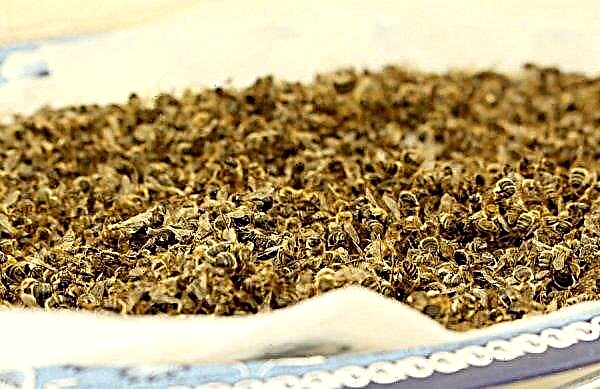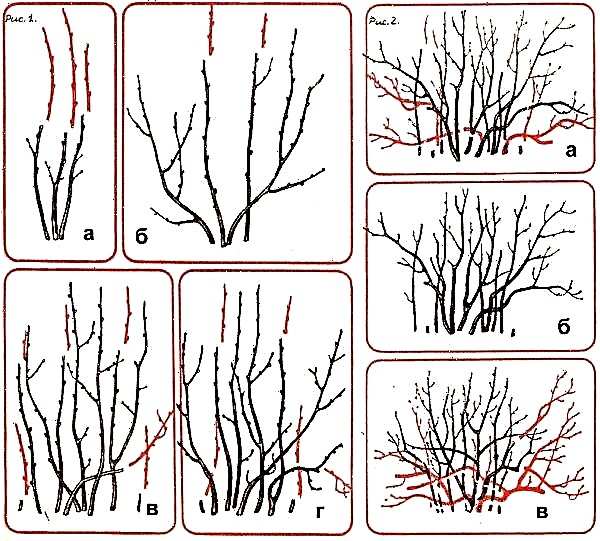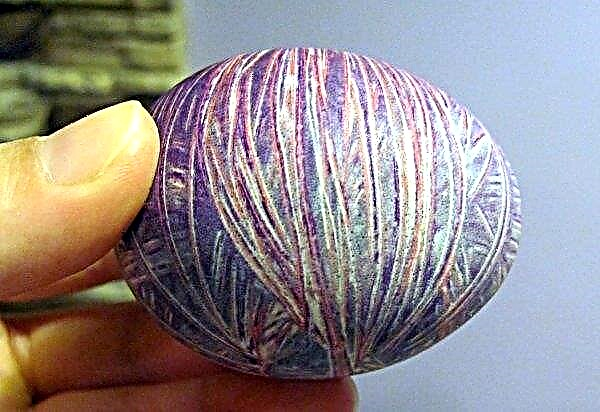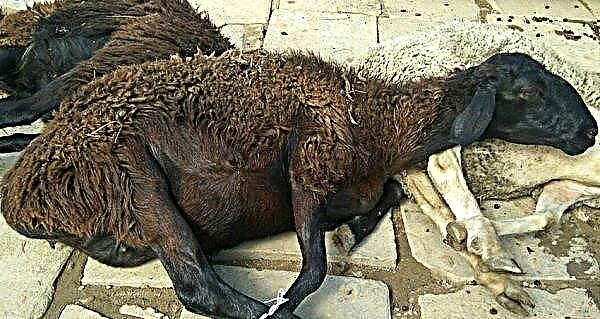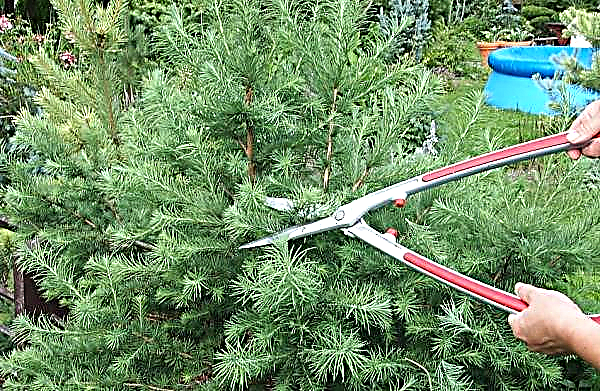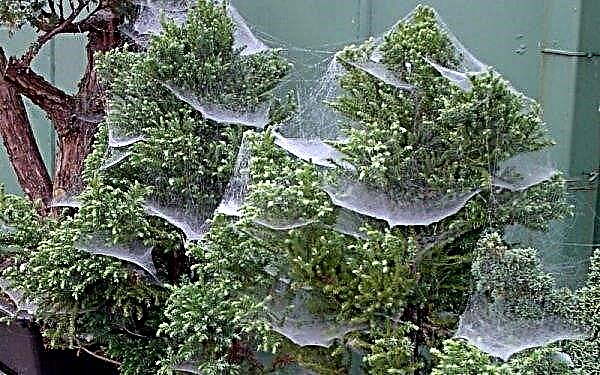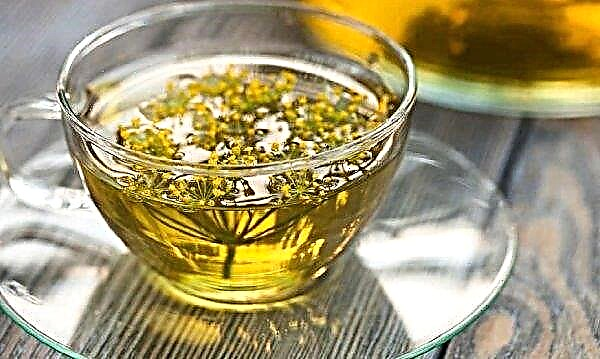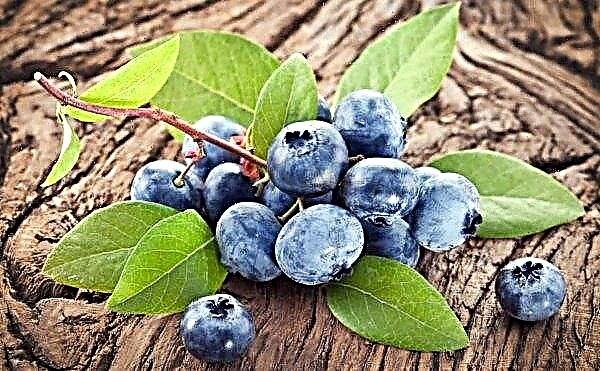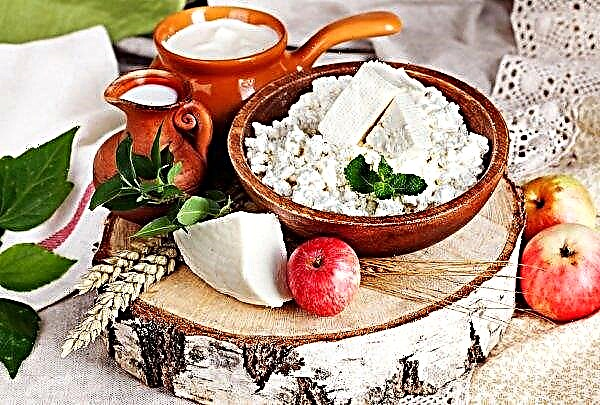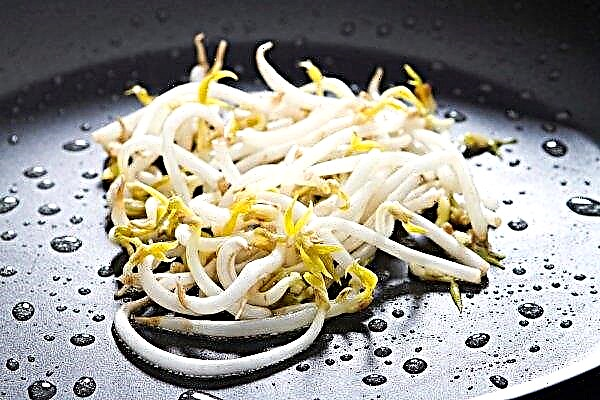Conifers are included in the list of central plants that are used for landscaping a summer cottage and create a diverse composition. Among them, thuja is most popular due to its unpretentiousness, graceful appearance, and the ability to complement almost any flower bed. The article describes in detail how to properly use this plant in a mixborder, as well as the most successful tree combination schemes in modern landscape design.
The use of thuja in the flowerbed
In landscape gardening art, thuja can rightfully be called the most universal representative of the flora. This tree has a wide scope, and the ease of care and pruning allows you to create a truly unique and inimitable garden. The plant looks good both in group plantings in combination with flowering and coniferous species, as well as in individual ones. Often, a central specimen of a flower bed is made of thuja, surrounding with perennial and annual flowers or shrubs. However, the plant looks most harmonious in rock gardens. Being one of the traditional representatives of the mountainous terrain, a small tree will best emphasize the artificial rocky landscape, filling the upper vegetation layer. At the same time, it will create a favorable microclimate for the growth and development of species of the lower tier and ground cover plants.
However, the plant looks most harmonious in rock gardens. Being one of the traditional representatives of the mountainous terrain, a small tree will best emphasize the artificial rocky landscape, filling the upper vegetation layer. At the same time, it will create a favorable microclimate for the growth and development of species of the lower tier and ground cover plants.
Special attention should be paid to the use of this coniferous species as a hedge. The tree can be used as the basis for the design of a continuous garden barrier, dividing the plot or emphasizing garden paths. Thuja are also often used to create alleys, while the crown of a tree is often given a pyramidal or spherical shape.
Species and varieties combined with flowers
Thuja is considered an indispensable plant for creating complex, but at the same time motley compositions from several groups of plants. This is explained, first of all, by the fact that this coniferous species can be pruned without difficulty. This allows you to give the crown almost any shape, including creating a unique garden figure.
The most popular type of plant, which is used for landscaping the garden, is considered thuja western. This is a large tree, characterized by a dense crown and soft needles. For planting, along with flowering species, the varieties Brabant, Smaragd, Danika, Woodward, Filiformis and Erikoides are often used, including combining them with each other.
Did you know? Thuja was the central plant of the American Indians. It was actively used for religious ceremonies, the preparation of medicines, as well as a universal building material.
In addition, a beautiful flower garden can be created with the following types of arborvitae:
Plants that look good paired with thuja
As mentioned above, thuja is combined with almost any decorative plant. However, to create a truly harmonious and attractive flowerbed, you need to try hard. In this case, in order not to be mistaken, you can take advantage of the traditional and win-win combination of wood with other decorative types.
Juniper
Thuja and juniper make it possible to create a simple, but at the same time elegant, evergreen conifer that can delight year-round. Plant growers know a huge number of varieties of these plants, so almost everyone can choose the most aesthetic combination. At the same time, such a mixborder will look the most advantageous, regardless of the initial budget.
Since the juniper grows slowly, it is planted in groups to fill the lower tier. In this case, both small bushy forms and creeping varieties will look good. Thuja in this case will be the central plant, since in just a few years the tree will completely fill the upper tier of the flowerbed.
Hosta
As a rule, it looks no less successful together with the tree and the host. This common garden plant allows you to emphasize the elegance and aesthetics of the thuja, as well as its magnificent crown. In addition, hosta varieties with bright and variegated leaves can dilute the green flowerbed and give it a special decorative effect. Instead, the thuja creates a light shadow, as well as a microclimate, necessary for the successful growth of the hosta host bush.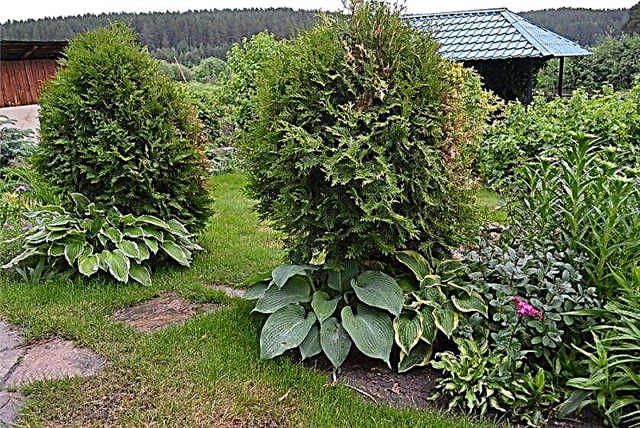
Roses
Coniferous plants and roses in the flowerbed is a rather bold, but at the same time winning combination. Such a mixborder in the country looks as elegant as possible, and a blossoming rose flower can please the eye throughout the entire warm season of the year. The scheme of such a flower garden can be various, including circular, where the thuja will be the central view, flowers are planted around.
Video: roses and conifers in a landscaped garden
Other plants
Landscape designers distinguish other harmonious combinations of arborvitae with all kinds of species. Thanks to this, it is possible to design truly unique flower beds from different combinations of plants. Decorative cereals look good together with conifers. For this, the most suitable are grate, fescue, miscanthus and feather grass. In addition to roses, any flowering perennial can complement the graceful needles of a tree: hydrangeas, rhododendrons, phloxes, chrysanthemums, clematis, lilies, daylilies and delphiniums.
Important! It is strongly recommended not to plant thuja near a birch or bird cherry. This will lead to interspecific competition of plants for nutrients, which often leads to inhibition of coniferous growth.
To annually change the lower tier of the flowerbed, you can plant annuals. The same planting of many small flowers can ideally emphasize the rich green color of the needles and make the tree a central object or become an excellent basis for a high hedge of wood. At the same time, they are most effectively combined with the arborvitae of viscari, salvia, godetia, gypsophila, calendula, marigold, nasturtium, daisy, nigella, eschscholzia.
Compositions using thuja and flowers
To make a spectacular flowerbed on the site, beginners and experienced growers often rely solely on their taste. However, such a solution is not always possible to achieve the desired result. Therefore, in order not to be mistaken, you can use ready-made schemes that have been tested over the years by thousands of summer residents and designers.
Minimalistic
Such a scheme involves creating the most effective mixborder, while using a minimum of vegetation and space on the site. For this, no more than 3 plants are often used. The easiest option is to plant brightly blooming roses around a thuja. Such a flower bed can take a variety of forms. Most often, a tree is planted as a central object, around which pink plantings are broken.
You can also create a composition from thuja and pine pug. To achieve the most harmonious layout, on the first tier of landings, thuja is combined with astilbe or petunias. The shape of the flower bed itself in both cases is selected according to individual requirements.
Longline
The tiered composition involves the creation of a thick flowerbed, which combines at least 2-3 horizontal projections. The most popular is a circular pattern. Thuja becomes the center; around it, Cossack juniper should be planted. In the background, as a ground cover species, any perennial species of flowering plants is planted to choose from.
The thuja can also be grown in the background, while rocky heather Blue Arrow should be planted as background vegetation. In the lower tier are any creeping variety of heather.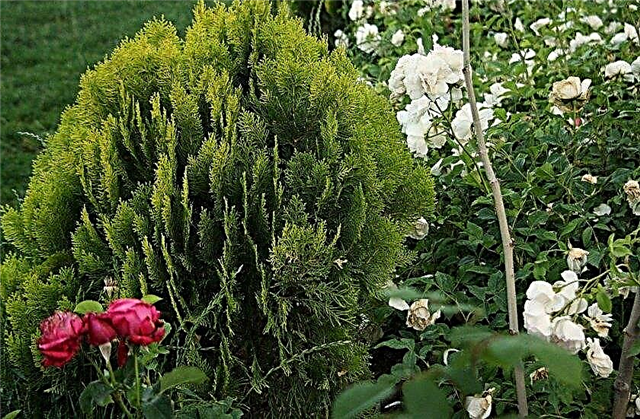
Forest landscape
If you are faced with the task of creating a real forest corner in a secluded area of the garden, for this you should plant seedlings of thuja, larch, pine and balsam fir at the same distance. Such a mixture of flora will help create an exquisite evergreen conifer, not only distinguished by aesthetics, but also by its incredible aroma. As a groundcover plant in the lower tier, you need to plant fern, asters and geraniums, which will give the composition complete completeness.
Spherical
Correct geometric shapes always attract attention, and decorative planting is no exception. To create such a flowerbed in the center, you should plant a mix of the spherical thuja Danica, Teddy and Tim-Tim. Alternatively, such a conifer can be diluted with a globose. Surround such landings should be shaved, bryozoans. After that, at the end, any ground cover should be planted, dwarf cotoneaster hybrids, which are planted around the circumference of the bed, are considered the most successful option.
Important! To plantations look really impressive, you need to take care of the basic background. They should serve a uniform and trimmed lawn. Uncontaminated soil reduces the overall decorativeness and aesthetics of the entire flowerbed.
To preserve the decorative appearance of the flowerbed, as the trees grow, formative pruning must be performed, otherwise the decorativeness of the plantings will be greatly reduced. There is an option using other perennials. In the center of the flower bed, you need to plant any type of conifer you like, which you can choose to surround with barberry, juniper or dwarf pine hybrid. The creation of a flower bed is completed by planting along its perimeter (circumference) of a pillow-shaped heather, which should be diluted with violets, phlox or shaved.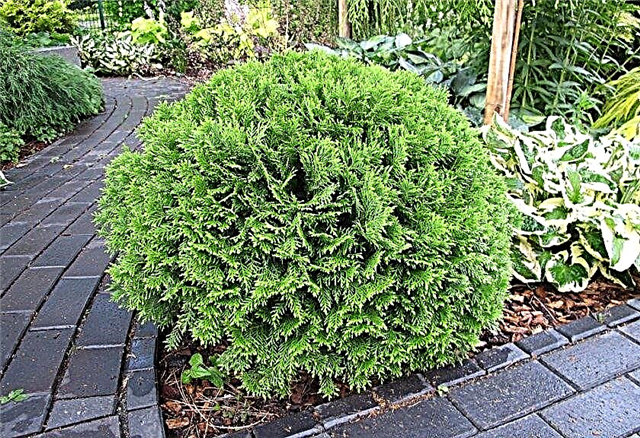
Other compositions
In addition to the above, there are other options for designing a flowerbed with arborvitae. As an alternative, you can use the following schemes:
- hedge - the coniferous tree lands along the perimeter of garden roads, a border or a site. In the lower tier, roses or another perennial flowering species are planted;
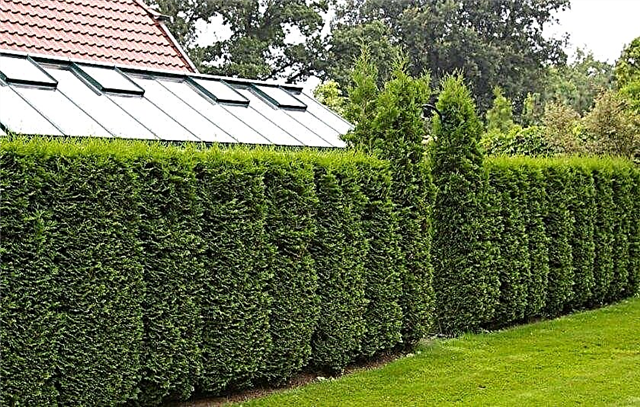
- rocky - the basis for the flowerbed is a small artificial hill created from a mixture of large granite stones and soil. The foot should be framed with a saxifrage or lyatris in combination with any ground cover heather. On the slope, a mix of thuja, pine and larch should be planted;
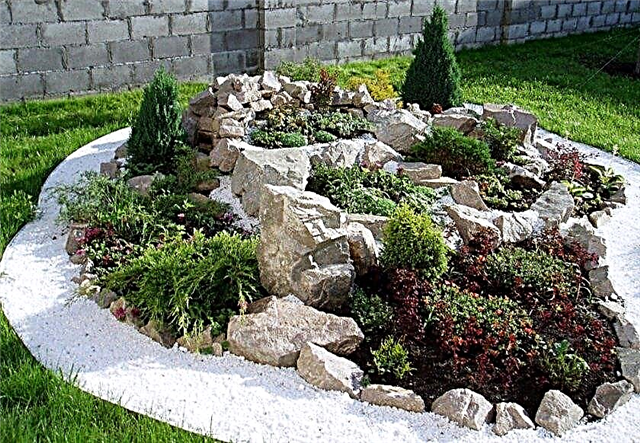
- rocky with a slope - with the help of large boulders it is necessary to build a small, almost horizontal slope up to 1 m high. Several types of arborvitae should be planted on a hill, if necessary, combined with pine, larch and other conifers. Armeria, branchicoma, dimorphic, arena or periwinkle, including their combination, are placed in the lower part;

- multi-colored - The upper tier of the flowerbed should be filled with a mix of thuja Reingold, Mika and Tiny-Tim. As ground cover varieties, sedans and phlox need to be planted.
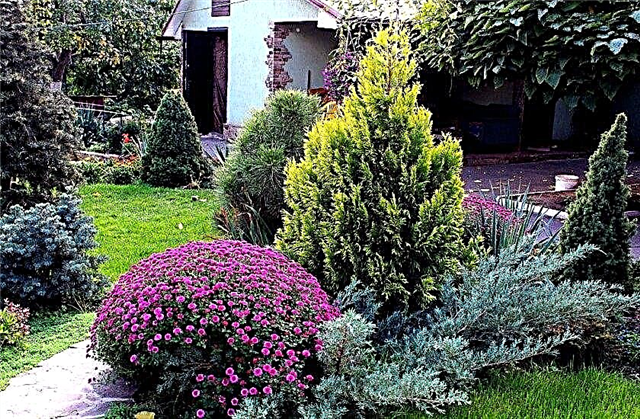
The combination of thuja with bushes
Thuja is traditionally considered one of the most successful plants for planting next to tall and creeping shrubs. This is one of the most successful combinations to create an aesthetic composition. The tree is supplemented with absolutely any bushy look, including creeping varieties of coniferous and deciduous bushes. However, the thuja landing together with heather is considered the most successful combination.
Did you know? In the province of Ontario (Canada) grows the oldest thuja in the world. The age of this tree is 1.5–2 thousand years.
This plant allows you to create a truly colorful composition, and all kinds of hybrids can fill both the middle and lower tiers of the mixborder. At the same time, bright shades of flowers will create an excellent contrast of bright green needles. Coniferous trees with barberry and spirea can be combined quite effectively. Their bright and saturated leaves of red, burgundy, yellow and golden tones can give high contrast to the needles and perfectly distinguish them from the background of the entire garden.
Proper layout and fit
Choosing the optimal planting scheme makes it possible to create a flowerbed quickly and in just a few steps. But, not everyone has a clear and refined taste and can harmoniously combine all kinds of varieties and hybrids of conifers, deciduous and flowering ornamental plants on the site. Therefore, most landscape designers recommend relying not only on their own taste, but also some rules for harmonious planning and planting of decorative crops.
To do this, adhere to the following principles:
- the size - the flower bed should not be too small or large relative to the size of the site. In the first case, it will look inexpressive, in the second it will create a feeling of tightness;
- simplicity and integrity - the composition should be light and unobtrusive, harmoniously combining with the entire territory of the garden. At the same time, it is necessary to maintain a balance of minimalism, which will not only save the budget, but also help to achieve a rational filling of the space;
- proportionality - plants in the garden should be planted strictly in relation to their longline affiliation;
- of balance - the whole composition should be in optimal harmony with other country buildings and structures, complementing the overall picture;
- repetition - flowerbeds look the most successful, in which the strict alternation of crops is sustained, while the number of copies of most species should be at least 2–3 pcs .;
- symmetry - The correct symmetry always looks beautiful, while you should adhere to smooth and rounded lines. Sharp corners do not occur in nature and look unnatural;
- growth rate - Plants should be planted, taking into account the speed of their growth, otherwise, after only a few seasons, the flowerbed can turn into chaotic thickets.
A flower bed with thuja and flowers is a successful addition to any garden. Such a composition creates an excellent contrast between bright green needles and delicate colors of all kinds of tones. However, in order to create a truly aesthetic mixborder, some rules should be taken into account, among which the principles of simplicity, harmony and symmetry are considered the main ones.





